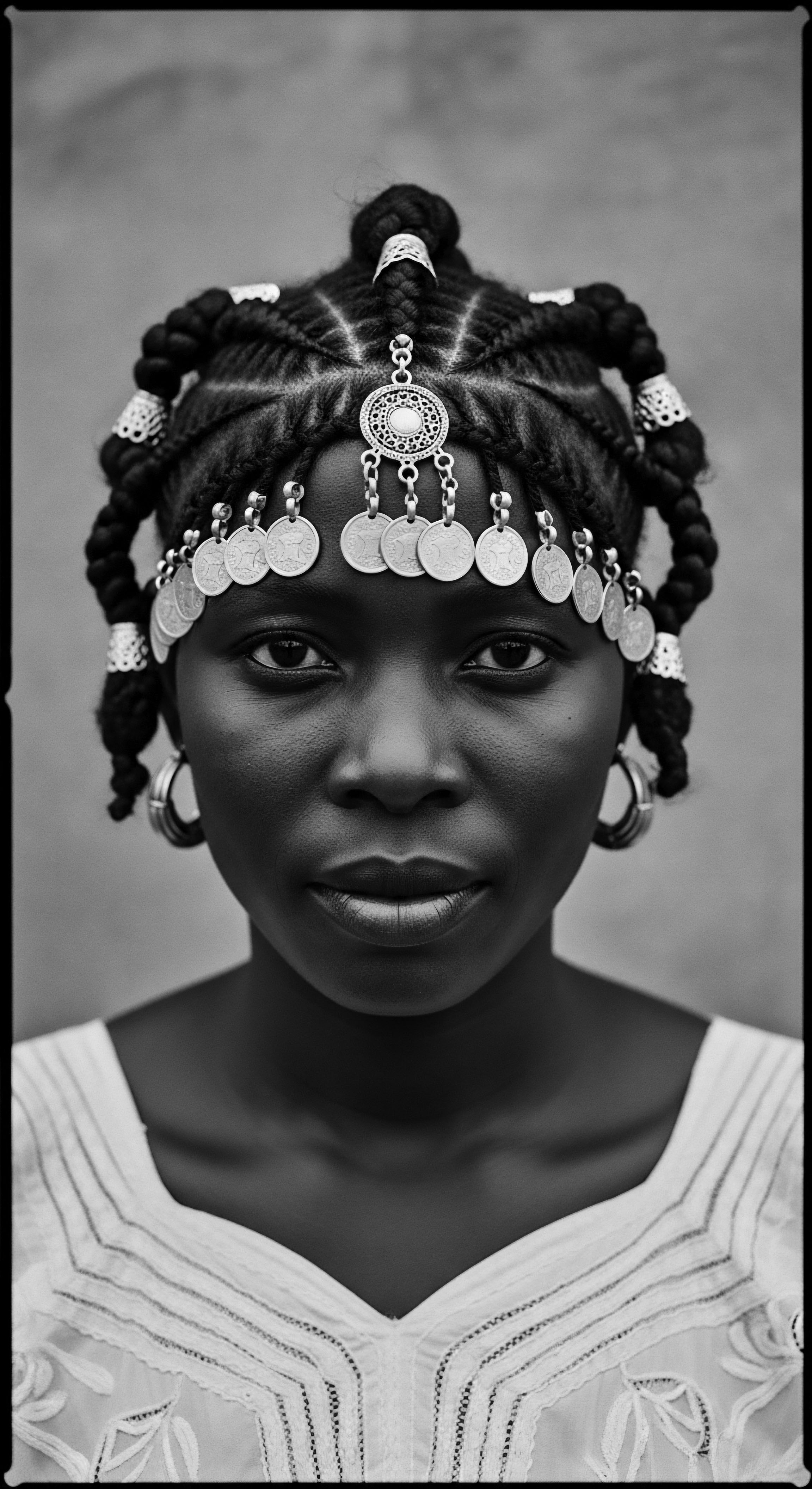
Roots
Consider, for a moment, the very strands that grace your head. They are not simply inert fibers; they are living archives, each curl and coil holding a whispered history, a genetic memory passed down through generations. To truly comprehend the nourishment our hair seeks, we must first turn our gaze backward, not to modern science alone, but to the deep well of ancestral wisdom, particularly as it pertains to textured hair. What sustained these magnificent coiffures of antiquity?
How did communities, without the aid of laboratories or complex chemical analyses, tend to their hair, intuitively reflecting the essential needs of these unique tresses? This exploration begins with acknowledging that hair, as a biological entity, has always drawn from the environment, both internal and external.

Hair Anatomy and Physiology from an Ancestral Lens
The intricate architecture of textured hair, with its elliptical cross-section and varying curl patterns, means its care has always demanded a specific, thoughtful approach. Historically, understanding the hair shaft, the follicle, and the scalp was not about microscopic examination, but about keen observation. The way hair behaved under different conditions – drying quickly, resisting breakage when oiled, or dulling without specific care – offered clues. These observations guided traditional practices.
The robust strength of a well-nourished strand, for instance, spoke to an underlying vitality, a resilience against the elements. Ancestors recognized that a healthy scalp was the bedrock of flourishing hair, a wisdom often expressed through scalp massages with indigenous oils and infusions.
The very presence of hair on the human body is a testament to protein structures, primarily keratin. Our forebears might not have named it ‘keratin,’ yet their diets and topical applications implicitly supported its formation. Dietary staples rich in amino acids, the building blocks of protein, would have contributed to robust hair growth.
Think of the reliance on protein-rich legumes, grains, and lean meats or fish in many ancestral diets across the globe, each contributing to the foundational integrity of the hair fiber. Without adequate protein, hair grows brittle, loses its luster, and can thin, a condition surely observed and addressed through foodways in various cultures.

Ancestral Classification and Care Systems
Though modern textured hair classification systems often focus on numerical curl types, historical societies possessed their own, more fluid and experiential categorizations. Hair was often described by its texture – soft, coarse, springy, fine – and its behavior – how well it held a style, how easily it tangled, its sheen. These classifications weren’t about rigid numbering but about guiding care. A woman whose hair was known to be ‘thirsty’ would be given specific oils, while another with ‘strong’ hair might receive different styling techniques.
This intuitive understanding, honed over centuries, reflects a profound connection to the hair’s biological needs, even if the precise nutrient was unknown. The application of certain plant extracts, for example, for strengthening or adding shine, was a practice born of observing results, echoing the need for specific vitamins or minerals.
Historical hair practices, often rooted in keen observation, implicitly addressed hair’s foundational nutrient needs.
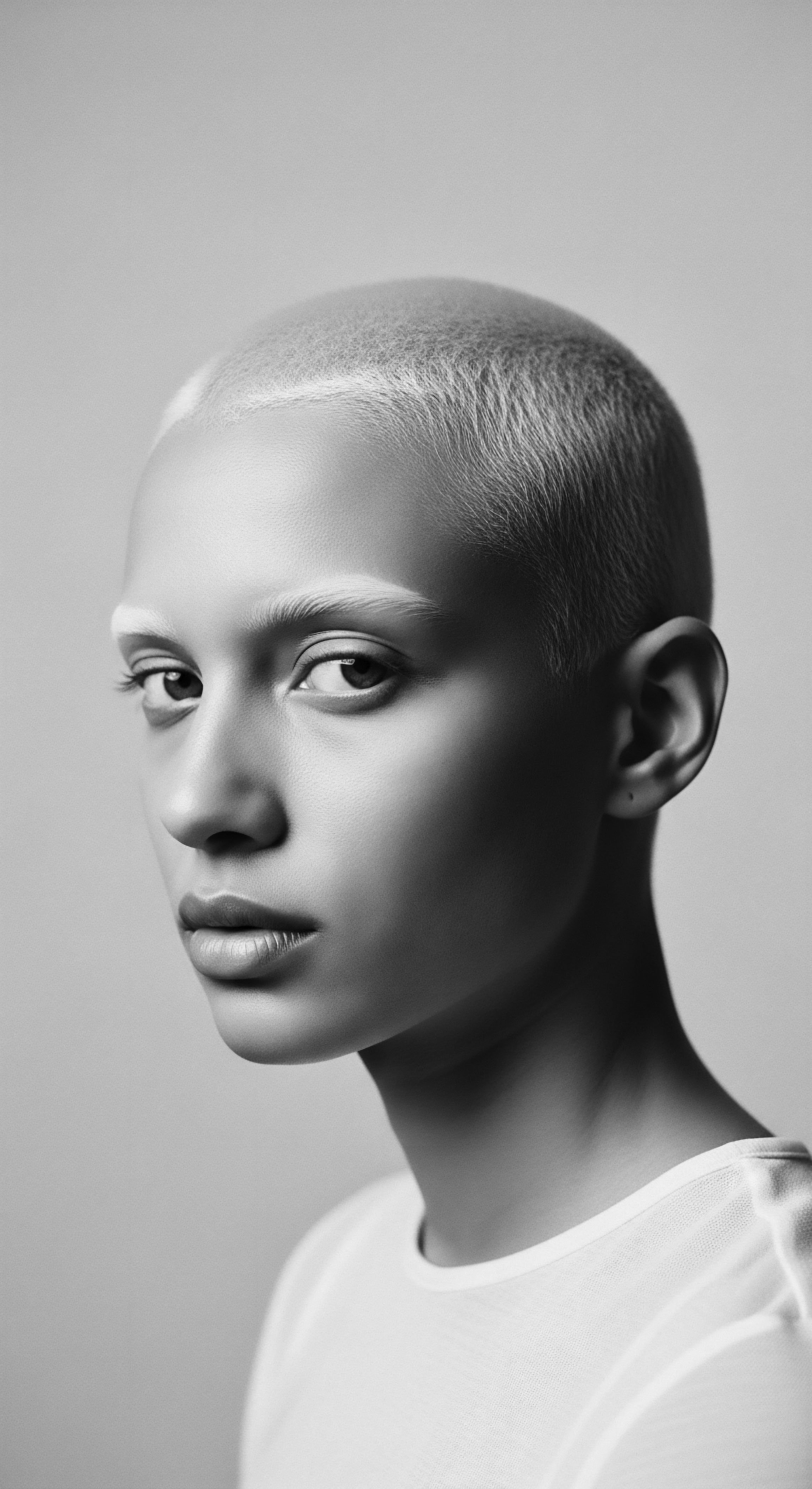
Dietary Links to Hair Vitality through History
The connection between diet and hair health is as old as humanity itself. Long before the era of vitamin supplements, communities sustained hair health through intentional food choices. In many West African societies, for example, the consumption of particular seeds, nuts, and leafy greens was integral to overall wellness, including hair vitality.
These foods provided a spectrum of nutrients crucial for hair ❉ Vitamins A for sebum production, B Vitamins (especially biotin) for cell proliferation in the hair follicle, Vitamin C for collagen synthesis, Iron for oxygen transport to follicles, and Zinc for hair tissue growth and repair. A decline in hair health often signaled a nutritional imbalance, prompting a return to specific traditional foodways or herbal remedies.
The pastoral Himba women of Namibia offer a striking instance of historical hair practices reflecting nutrient roles. Their celebrated practice of applying Otjize, a paste of ochre, aromatic resin, and butterfat, to their skin and hair, is more than a beauty ritual; it is a profound expression of cultural identity and practical care. The Butterfat, derived from cow’s milk, is rich in lipids (fatty acids) and fat-soluble vitamins (like Vitamin A). These lipids provide essential moisture and act as a sealant, preventing environmental damage and reducing protein loss from the hair shaft.
This practice intuitively guards the hair’s structural integrity, a role that modern science now attributes to lipid layers in healthy hair cuticles (Moyo & Van der Lingen, 2022). It represents an ancestral wisdom that harnessed readily available, nutrient-dense natural resources for comprehensive hair protection and conditioning.
| Historical Practice / Ingredient Shea Butter application (West Africa) |
| Implicit Nutrient Role Understood Deep conditioning, protection from drying, strength |
| Modern Scientific Link Rich in fatty acids (oleic, stearic), vitamins A and E; provides lipids for cuticle health and antioxidants for protection. |
| Historical Practice / Ingredient Consumption of Millet and Sorghum (Sahelian diets) |
| Implicit Nutrient Role Understood Hair strength, reduced shedding, growth |
| Modern Scientific Link High in silica, zinc, B vitamins; these support hair tissue growth and repair, keratin formation. |
| Historical Practice / Ingredient Scalp massage with Castor Oil (Caribbean/African traditions) |
| Implicit Nutrient Role Understood Stimulated growth, thicker hair |
| Modern Scientific Link Contains ricinoleic acid, a fatty acid with anti-inflammatory and circulation-boosting properties. |
| Historical Practice / Ingredient Ancestral practices, though lacking modern terminology, frequently mirrored contemporary understanding of hair's nutrient requirements. |
The very pulse of hair growth, its cyclical nature, was also observed. The shedding of hair, a natural part of its cycle, was understood as a renewal, but excessive loss might signal distress. Traditional healers and caregivers would often look to diet, climate, or spiritual well-being as causes, addressing these through herbal infusions, specific food protocols, or communal rituals. The ancestral understanding of hair’s life cycle, though perhaps not framed in scientific terms of anagen, catagen, and telogen phases, was no less potent in guiding practices that supported overall hair vitality and its connection to systemic health.
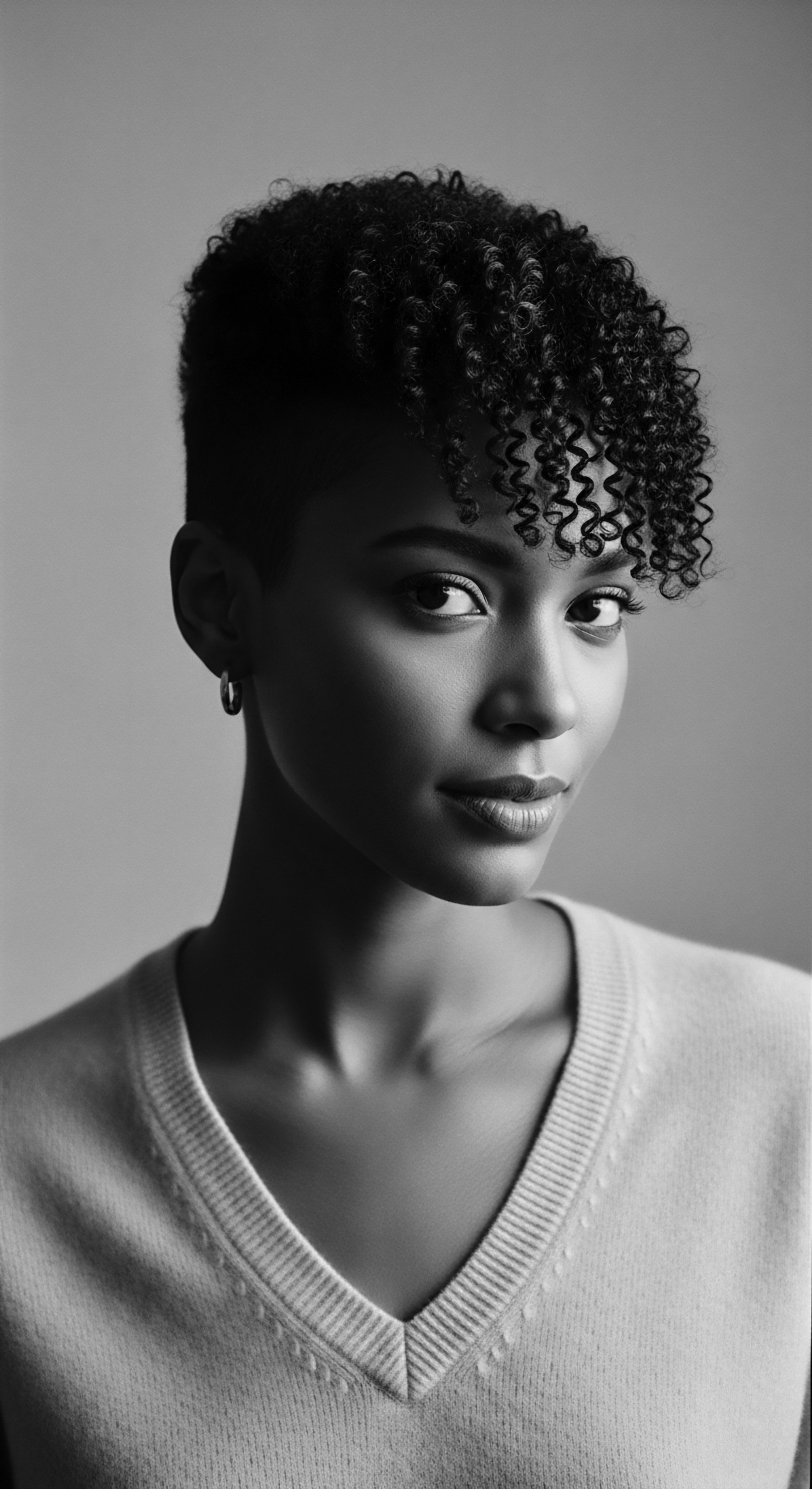
Ritual
Hair care, particularly within communities with textured hair, was rarely a solitary, utilitarian act. It blossomed into a deeply woven fabric of ritual, social connection, and cultural expression. These rituals, passed down through the ages, often enshrined the implicit understanding of what sustained hair’s health, even if the precise nutrient mechanisms remained unseen. How did the structured application of oils, the communal braiding sessions, or the ceremonial adornments reflect an ancestral wisdom about nourishing hair from root to tip, reflecting deep nutrient roles?
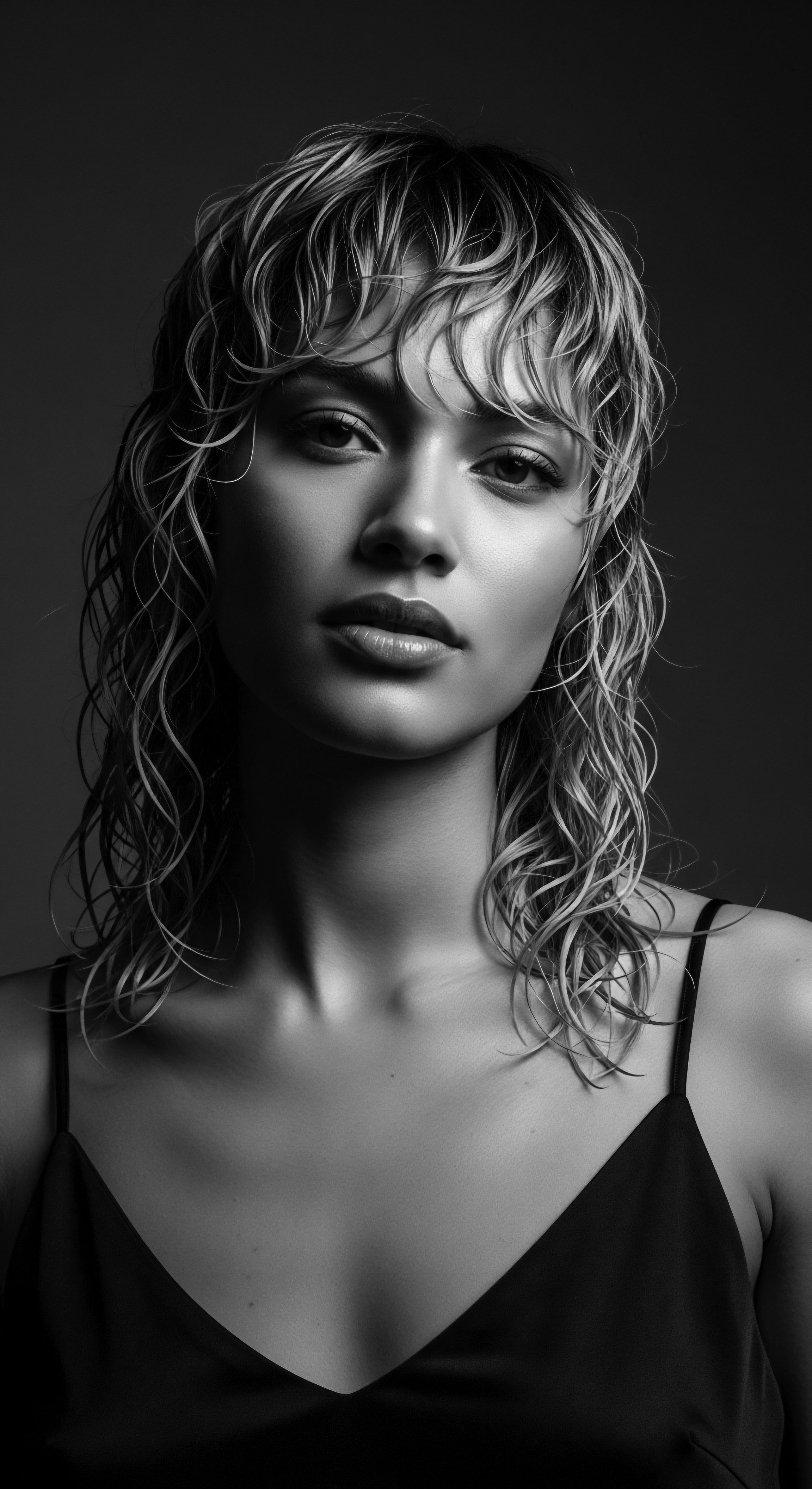
Protective Styling Ancestral Roots
Protective styling, now a global phenomenon for textured hair, finds its genesis in practices stretching back millennia. Styles like braids, twists, and locs were not simply aesthetic choices; they were strategic defenses against environmental stressors, reducing breakage and retaining moisture. This reduction in mechanical stress, which can deplete the hair’s structural integrity (its protein matrix), acted as a shield. The intricate braiding patterns, for instance, often involved the incorporation of natural substances before or during styling.
These substances, ranging from specific plant extracts to oils, provided a sustained release of conditioning agents. This sustained nourishment, often rich in lipids, implicitly supported the hair’s barrier function, guarding against water loss and maintaining the suppleness of the keratin chains within.
- Palm Oil ❉ Used in parts of West and Central Africa, its deep orange hue speaks to its carotenoid content, providing antioxidants. It was applied for conditioning and luster.
- Coconut Oil ❉ Prevalent in many tropical regions, its unique fatty acid profile (lauric acid) allows it to penetrate the hair shaft, reducing protein loss during washing.
- Baobab Oil ❉ From the “tree of life,” its richness in omega fatty acids and vitamins C, A, and D made it a prized emollient, often used to soften and protect hair.
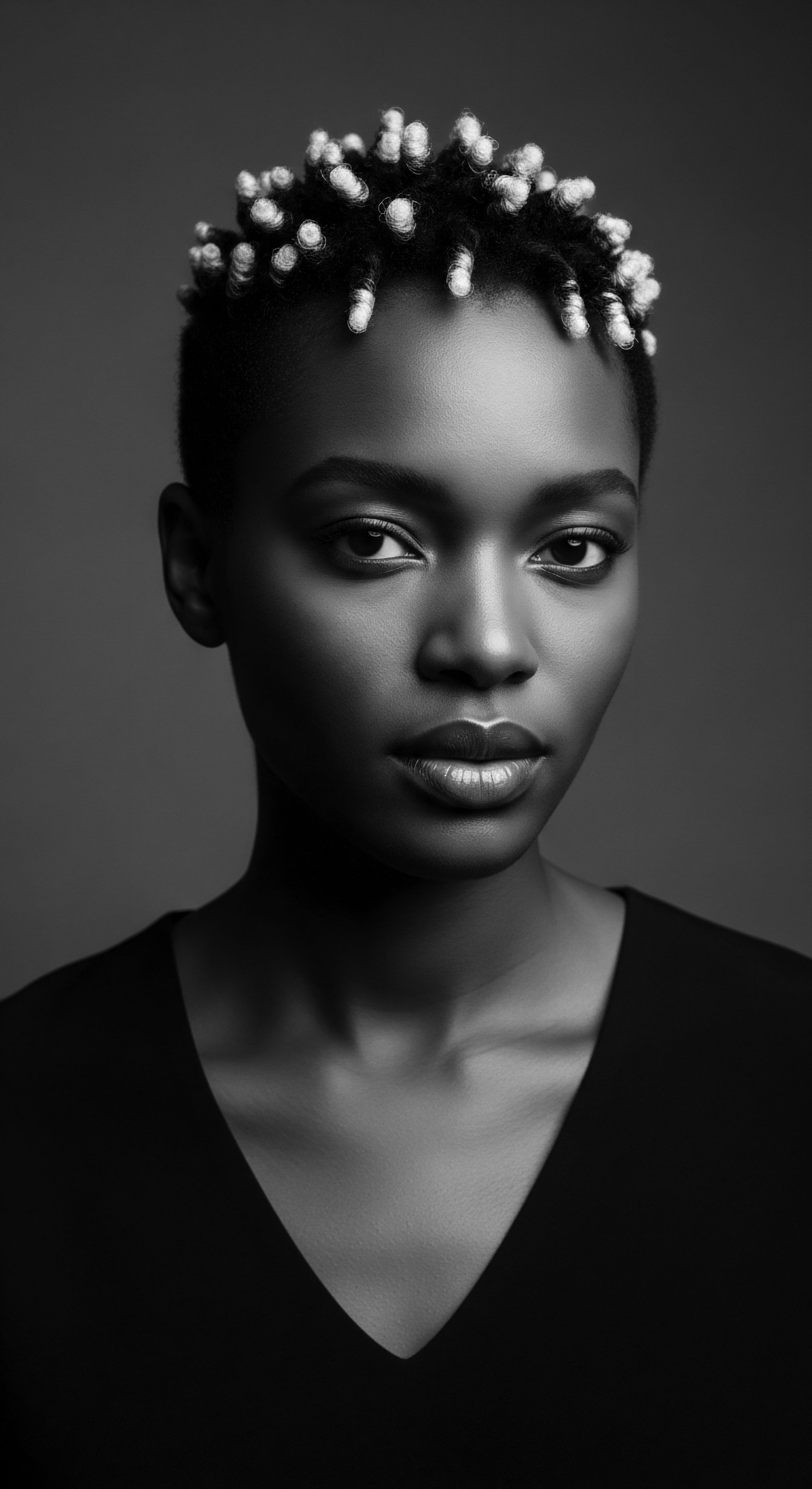
Traditional Natural Styling and Definition
The pursuit of defined curls and coils, a hallmark of textured hair, has ancient roots. From water-based methods to the careful application of plant-derived emollients, these techniques implicitly addressed the hair’s need for hydration and conditioning, crucial for maintaining elasticity and preventing breakage. The way ancestral communities shaped and set their hair, often involving slow drying and sealing, created an environment where the hair’s natural moisture could be preserved. The application of mucilaginous plants, such as Okra or Flaxseed, would provide natural polymers that offered hold and definition.
While not nutrients in the classical sense, these plant extracts would contain beneficial compounds that coated the hair, offering a physical barrier and contributing to surface smoothness, which minimizes friction and thus, damage. This, in turn, allowed the hair’s inherent protein structure to remain intact.
Hair rituals, far from mere adornment, implicitly addressed hair’s need for hydration, protection, and structural integrity.

Holistic Care and Nutrient Synergy
The ritual of hair care also extended to holistic well-being, often blurring the lines between topical application and internal sustenance. The idea that outer beauty reflects inner health is a profound truth in many ancestral traditions. This meant that practices related to hair health were often intertwined with dietary practices and communal wellness.
For instance, the ceremonial use of a particular herb in a hair rinse might coincide with its consumption in a broth, creating a synergistic effect where nutrients were supplied both topically and internally. This holistic approach, often found in ethnobotanical traditions, points to a deep, intuitive grasp of how the body’s internal state reflects on the hair.
Consider the preparation of various hair tonics and masques in many African and diasporic communities. These often included fermented ingredients or mixtures left to sit, allowing for beneficial microbial activity. Such processes could increase the bioavailability of certain compounds or even produce new ones, much like fermentation processes increase vitamin content in foods. When applied to the scalp, these could have contributed to a healthier microbiome, indirectly supporting the nutrient absorption and overall vitality of the hair follicles.

Understanding Ancestral Application Methods
The specific methods of application within these rituals are as important as the ingredients themselves. The slow, deliberate massaging of oils into the scalp, often done during communal grooming, enhanced circulation, delivering vital blood flow and, by extension, nutrients, directly to the hair follicles. This physical stimulation, combined with the beneficial compounds from the oils, created a micro-environment conducive to hair growth. The meticulous unbraiding and rebraiding, though time-consuming, allowed for careful detangling and inspection, minimizing stress on the hair and preserving its length, a visual testament to the success of nutrient-supportive care.

Relay
The journey of textured hair care, from ancient communal rituals to the complex understanding we hold today, is a continuous relay of knowledge. Each generation, through observation, practice, and adaptation, has passed the baton, enriching our grasp of how hair thrives. This transmission, especially within Black and mixed-race communities, holds profound significance, illustrating resilience and ingenuity. How do the insights gleaned from historical hair practices, particularly concerning nutrient roles, inform our contemporary understanding of hair health and beauty for textured hair?

Bridging Ancient Wisdom and Modern Science
The ancestral understanding of hair’s needs, though often expressed in observational terms rather than chemical formulas, frequently aligns with contemporary scientific findings regarding nutrient roles. Take, for instance, the widespread historical use of natural oils such as Shea Butter, Mango Butter, or Cocoa Butter. These fatty acids, essential for hair fiber flexibility and cuticle integrity, were applied for their moisturizing and protective qualities, a direct reflection of their lipid and vitamin content.
Modern trichology now confirms that lipids are crucial for reducing hygral fatigue (the swelling and shrinking of hair as it absorbs and releases water), a common challenge for porous textured hair. This historical wisdom, now validated by science, provides a powerful link between what was known through ancestral experience and what is understood through laboratory analysis.
Another compelling instance lies in the use of certain plant extracts, like Fenugreek (often soaked to create a conditioning rinse) in various traditions. Fenugreek is rich in proteins, nicotinic acid, and a spectrum of B vitamins. Its historical application for hair growth and strength speaks to an intuitive grasp of its nutrient profile, which supports follicular health and minimizes hair loss. While our ancestors did not possess the tools to isolate these compounds, their empirical evidence of positive outcomes guided the continuation of these practices across generations.

The Living Legacy of Nutrient-Informed Practices
The historical connection between diet, environment, and hair quality is a powerful current in our understanding of textured hair health. The very fabric of society, from agricultural practices to seasonal food availability, shaped the internal nutrient supply that supported hair. Famines or periods of nutritional scarcity, tragically common during certain historical epochs, would have visibly impacted hair health, leading to brittleness, thinning, or even temporary loss.
Conversely, periods of plenty, with access to diverse, nutrient-dense foods, would have been associated with robust, vibrant hair. This direct correlation, observed through centuries, underpins the modern emphasis on a balanced diet as a cornerstone of hair wellness.
The relay of ancestral knowledge, often expressed through ritual, continuously informs our contemporary understanding of hair’s nutrient requirements.

Navigating the Modern Landscape with Ancestral Guidance
How does the historical emphasis on hair’s nutrient roles guide product development and hair care choices today? The modern marketplace, overflowing with options, sometimes overlooks the simplicity and potency of ancestral ingredients. Yet, many contemporary products for textured hair are increasingly incorporating ingredients like Shea Butter, Castor Oil, and various botanical extracts that have long been staples in traditional care.
This signals a return to a more holistic approach, acknowledging that while science offers precision, heritage offers profound, time-tested truths. The ancestral focus on nourishing the scalp, for instance, by applying oils and massaging, aligns perfectly with modern research on scalp microbiome health and its impact on follicle vitality.
The continuous dialogue between past and present allows for a deeper appreciation of the complex interplay of internal nutrition and external care for textured hair. We can now precisely pinpoint the vitamins, minerals, and amino acids that ancestral diets and topical applications implicitly provided. This knowledge empowers individuals to tailor their hair care regimens, drawing both from scientifically validated ingredients and the rich well of cultural wisdom. The spirit of self-reliance and resourcefulness that characterized ancestral hair care, often improvising with locally available, nutrient-rich botanicals, still holds profound relevance.

Reflection
The journey through historical hair practices, particularly within the vast and varied landscape of textured hair heritage, is a profound meditation on the enduring wisdom of our ancestors. These practices, though often lacking the precise lexicon of modern nutritional science, intrinsically reflected a deep comprehension of the roles nutrients play in hair vitality. From the protective lipid layers provided by butterfats and plant oils, guarding against damage and loss, to the internal strengthening offered by diets rich in proteins and micronutrients, our forebears understood, through observation and generations of experiential learning, what sustained healthy, thriving hair.
The very act of caring for textured hair, then and now, extends beyond mere aesthetics; it is a resonant conversation with history, a soulful connection to lineage, and a profound statement of identity. Each coil and kink, lovingly tended, carries the whispers of those who came before us, a living, breathing archive of resilience, ingenuity, and a beautiful, inherent understanding of what truly makes a strand sing.
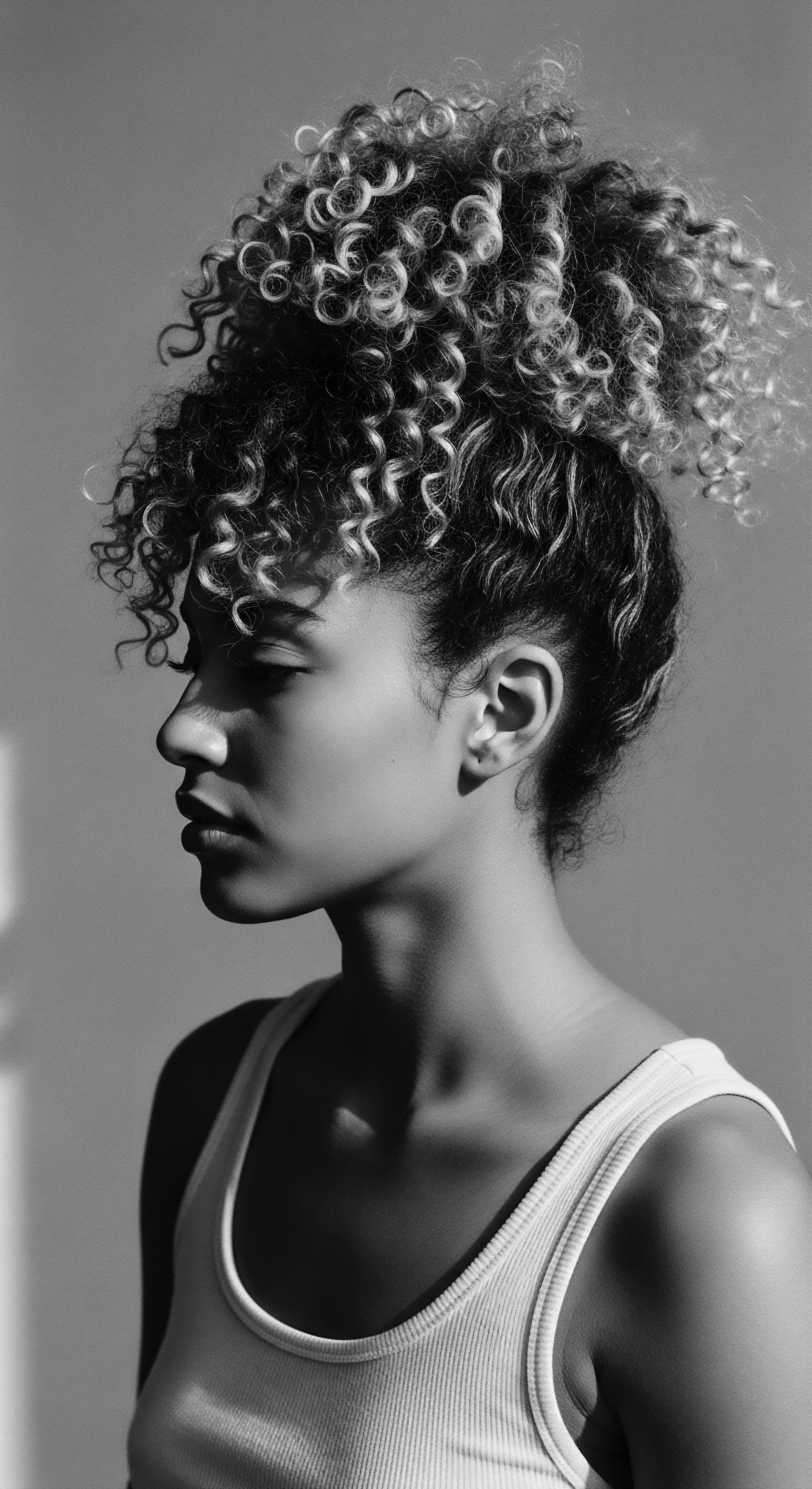
References
- Moyo, N. H. & Van der Lingen, N. (2022). The Himba women of Namibia ❉ A holistic perspective on their hair care traditions and the potential for biomimicry. Journal of Ethnopharmacology, 300, 115764.
- Draelos, Z. D. (2015). Hair care products ❉ A scientific background. Cosmetic Dermatology ❉ Products and Procedures, 442-452.
- Rele, A. S. & Mohile, R. B. (2003). Effect of mineral oil, sunflower oil, and coconut oil on prevention of hair damage. Journal of Cosmetic Science, 54(2), 175-192.
- Gavazzoni Dias, M. F. (2015). Hair cosmetics ❉ An overview. International Journal of Trichology, 7(1), 2-15.
- Randall, V. A. (2008). Hormonal regulation of hair growth ❉ an overview. Hormone Research, 69(3), 133-144.
- Messara, A. S. (2018). Traditional use of fenugreek (Trigonella foenum-graecum L.) in hair care ❉ A review. Journal of Traditional and Complementary Medicine, 8(2), 221-229.
- Dawber, R. P. R. (2001). Hair and scalp care. Dermatology in General Medicine, 5th ed. McGraw-Hill, 735-748.
- Gómez, J. M. & López, G. C. (2019). The Role of Diet and Nutrition in Hair Health ❉ A Review. Journal of Clinical and Aesthetic Dermatology, 12(9), 1-8.
